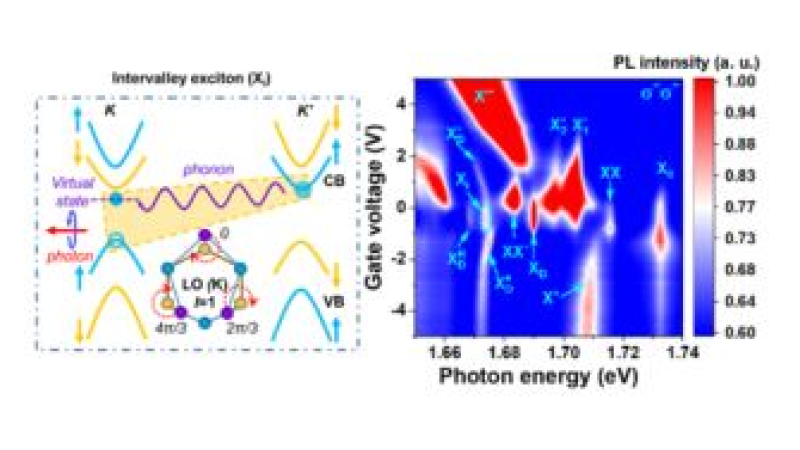December 10, 2019

Researchers at Rensselaer Polytechnic Institute have been working diligently to find and harness a quasiparticle that has a quantum degree of freedom, an essential property needed to advance quantum computing and quantum information storage.
In the team’s most recent publication, in ACS Nano, the researchers built upon their previous work as they continued to manipulate tungsten diselenide (WSe2) — a promising two-dimensional material — to further improve its computing and information storage potential.
In this paper, the team found that the interaction between light and WSe2 takes on a new form when an exciton interacts with a phonon. An exciton is a charge-neutral quasiparticle that is formed when a negatively charged particle bonds to a positively charged particle.
Researchers’ interest in the exciton’s potential has been growing over the past several years, but on its own, the exciton doesn’t have a long life.
That interaction between the exciton and the phonon helps the quasiparticle to maintain the desired quantum degree of freedom for a longer period of time, said Sufei Shi, an assistant professor of chemical and biological engineering at Rensselaer and corresponding author on this paper. That increased duration is necessary for researchers to look toward practical application.
More specifically, the researchers found that this interaction also reveals a special property of the phonon known as quantized lattice vibration.
Shi said that the team also found that the phonon could have chirality, similar to how your left and right hand are mirror images of one another. This chirality is well known in optics, but exploration of the chirality of the phonon was only theoretical until very recently.
These findings lay the groundwork for researchers to continue to study the chirality of the phonon through light and matter interactions, further increasing their understanding of how this material acts and can be used for application in more efficient devices.